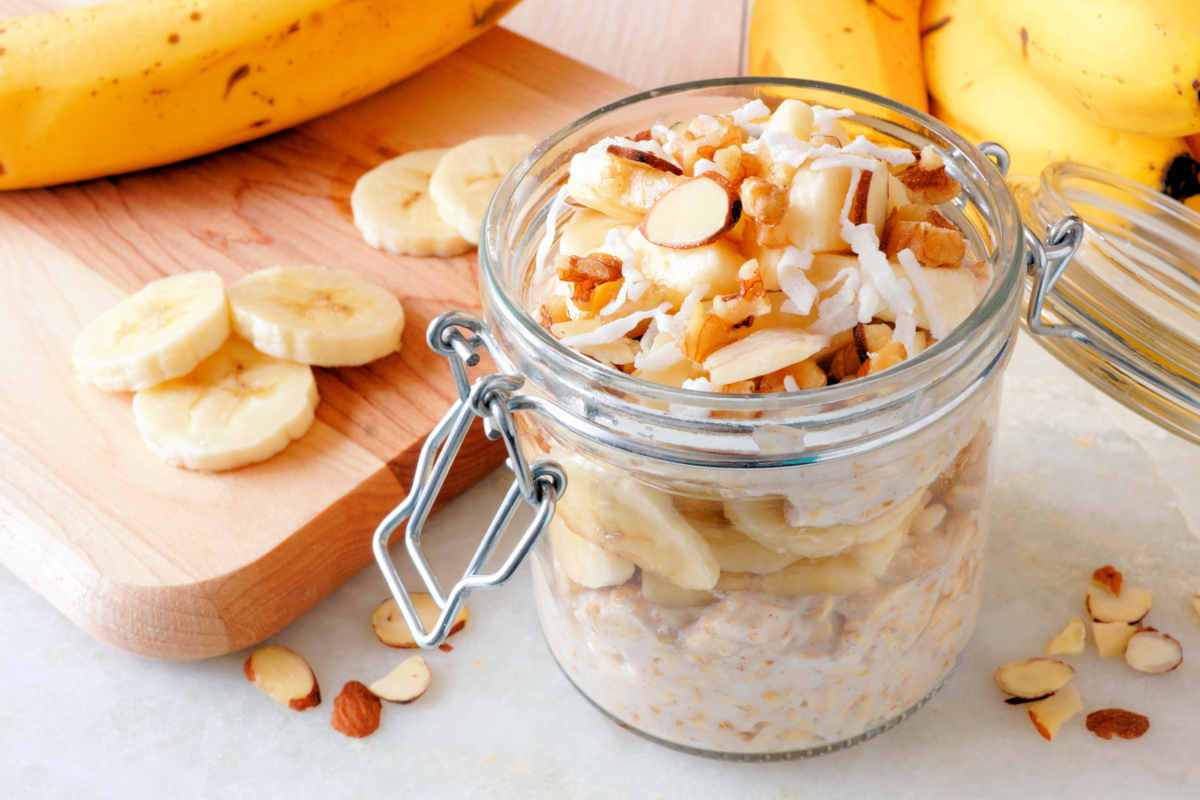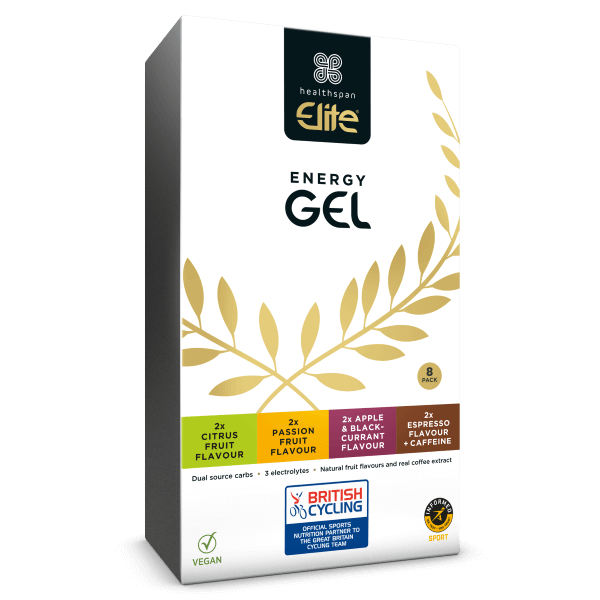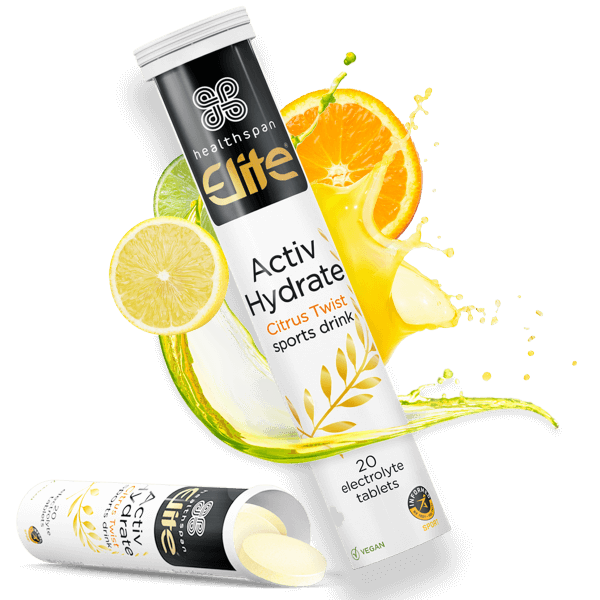From the day before a match to your post-match recovery (and everything in between), eating the right things at the right time is essential for optimum performance.
Every tennis match is different, but whether you're playing in a fast4 matchplay, league match or week-long tournament, tennis is a sport that places intensive demands on your body and energy levels. This means that having a fuelling strategy is essential to maintain stamina, strength, speed and agility from the first point to the last.
The problem is, that with so many unknowns (including match duration and intensity, and often even the start time), it's not always easy to know what to eat and when. Dan Ellis, lead nutritionist for the LTA, shares his advice to ensure you're well fuelled and ready to play your best.
What to eat the day before a tennis match
Just as you might pack your bag or re-grip your rackets the night before every match, it's also important to take care of your nutrition.
"The challenge when it comes to pre-match fuelling," says Dan, "is we never really know the length of the match until it's finished.
"This means that we fuel ahead of the match expecting a long battle, essentially being prepared for a worst-case scenario and maximising muscle glycogen levels to suit. The aim is to arrive on-court fully-loaded, then we can adapt the refuel after the match to reflect the match just played."
Focus on carbs
"This fuel-up should start the day before, to increase muscle glycogen levels, with a carb-rich lunch, afternoon snack and evening meal; perhaps a buddha bowl with plenty of brown rice, a fish pie, or a sweet potato shepherd's pie," says Dan.
"This can be followed later with a high-energy carb snack, like some fruit loaf with Greek yoghurt and berries, or perhaps just a simple smoothie with banana, honey, yoghurt, and a handful of berries."
What to eat on the day of a match
On the day of the match, there could be the added complication of a few nerves. "They can be tricky to negotiate," confirms Dan. "That's why it's key to really maximise the opportunity to fuel up the muscles the evening before, when nerves aren't as high."
Stick to known foods rather than trying anything new and try to establish a routine, so you follow the same pattern every time you play – although you may need to tailor things depending on the predicted start time of your match.
Breakfast
"Breakfast will need to be something palatable, and easily digested," says Dan. "An option is to travel with a portable blender and make up a smoothie that includes all the key nutrients needed. These are quick to make, taste good, are easy to take on board and can be based on the ingredients you can access (if you're not in your home country)."
Four hours before a match
As the match gets closer, you need to keep fuelling. "The meal four hours before a match needs to be low GI and rich in carbohydrate with a good hit of protein," says Dan. "If this falls at breakfast, then we're looking to top up the fuel stores in the liver that keep the bloodstream supplied with glucose; things like a large overnight oats with sliced banana, followed by poached eggs on brown toast with a large glass of water, are great options."

Overnight oats with banana will help to top up the body's fuel stores.
Around 2 hours before the match is a good time to get a decent amount of fluid on board to ensure optimal hydration, while allowing enough time for the fluid to pass before the match.
One hour before a match
With less than an hour to go, your focus should be on topping up your carbohydrates and staying hydrated.
"Think about getting that final top-up of carbohydrate in, so a quality flapjack or similar that provides around 25-30g would be ideal. This timeframe allows enough time for blood sugar to stabilise before the match," confirms Dan.
After that, the next time carbs should be taken on board is immediately before the match warm-up. "This means the fuel is taken straight into the muscle, as the carbohydrates delivered to the bloodstream can be quickly utilised by the muscle, and the insulin response is blunted by the rise in catecholamines (adrenaline) initialised by exercise.
"From then on, fuelling should continue at every opportunity."
"If the match is getting pushed back, it's key to keep topped up with smaller bites every 15 minutes to keep blood glucose levels stable."
What to eat during a tennis match
Even with the right fuelling strategy before a match, after about an hour of intense play, your body's store of carbohydrates will have already taken a hit. This makes it difficult to maintain blood glucose levels and supply your muscles with the energy they need.
Energy
With only short opportunities to refuel – 90 seconds at the change of ends and 120 seconds during set breaks – any on-court snacks need to be quick to consume and digest. That's why many players use energy gels to help support their performance.
"Energy gels are regularly used by the players as a convenient source of fast-acting carbohydrate, to support the high-intensity demands of a match and help maintain concentration throughout," says Dan. "In fact, several studies investigating the ergogenic effect of carbohydrate have observed an improvement of stroke quality1, improved running speed2, serve and return success, and time spent at higher intensities.3
"I advise players to aim for 60-90g of carbohydrate per hour from a combination of foods, gels, and drinks. Even if a match is not going to completely deplete fuel stores (glycogen), it is still wise to maintain carbohydrate intake throughout the match to potentially protect the stores you'll need when playing day after day during a successful tournament. This will keep fatigue at bay, performance optimal, and perhaps be the difference between winning and losing."
"In matches, a week of female and male elite competition has resulted in daily expenditures of 3824kcal and 5520kcal respectively4, with hourly match play expenditures for females and males during match play to be estimated at around 450 kcal and 648 kcal per hour."5
"A full day of training for a professional player can require 3300-4000kcal and 4000-5000kcal for a female and male athlete respectively, making fuelling during long training sessions important too, in order to maintain energy balance through the day."
Healthspan energy gels don't require water and are an easily absorbed, fast-acting source of carbohydrates. Each sachet contains 25g carbohydrates in the superior 2:1 maltodextrin to fructose ratio to allow for fast, effective re-fuelling without a sugar crash or gastrointestinal distress.
Three important electrolytes are added to the gels, sodium, potassium and calcium, which are lost through sweating and are essential for tennis players.

Elite Energy Gel - Mixed Pack
Carb and electrolyte boost developed with British Cycling
- Delivers fast-acting energy
- 25g fast-acting carbs and 3 electrolytes
- Apple & Blackcurrant, Citrus Fruit, Espresso (with Caffeine) and Passion Fruit
"Bananas have been a firm favourite in tennis for a while and aren't going away anytime soon," says Dan. "They are a simple carbohydrate snack that can be bought pretty much anywhere in the world, and they even come in their own plastic-free biodegradable wrapper!
If bananas are going to be part of the on-court fuelling, then the rule is 'the riper the better', as the glucose increases with ripeness10 and gets into the bloodstream quickly and into the muscles."
Electrolytes
Another thing to consider is your electrolytes, which are lost through sweating. "Every player has an individual sweat rate and sweat concentration," says Dan. "On still, hot days, or at the bigger events where tennis is played in enclosed courts, meaning wind flow is reduced, the ability for sweat to evaporate is also reduced. This increases sweat rate as the body continues to attempt to thermoregulate and can result in high fluid losses of 2-3 litres per hour. Dehydration can impact decision-making6, increase cardiac strain7 and impact temperature regulation."8
To complicate the situation, Dan explains, "replacing high amounts of sweat with plain water can result in our electrolyte concentrations being diluted. This is avoided by adding electrolytes to drinks to ensure those lost through sweating are being replaced. Although the contributors to exercise-induced cramp are varied, hydration and electrolyte balance are suggested to be involved, which further highlights the importance of electrolytes and fluids."9

Elite Activ Hydrate
Delicious fruit-flavoured electrolyte drink to replenish minerals lost during exercise
- Replenishes the essential electrolytes sodium, calcium, magnesium and potassium
- Contains 300mg sodium
- Informed Sport-accredited
After your match
This is the time to use nutrition as an aid to recovery, especially if you have another match later the same day or the day after.
"After a match," says Dan, "the main things to consider are the length of the match you just played, and when you are playing your next one. This information should then inform how 'aggressive' your refuel should be, influencing the total, type, and timing of your nutritional recovery strategy. For example, your intake following a 6-0, 6-0, 45-minute match would look different to a 3-set match with tie breaks."
The glycaemic index of foods is very important in this phase, says Dan. "After a good battle on court, we need to get carbs back into the muscle quickly and really optimise the muscles' ability to resynthesise their fuel stores over the next few hours. This is especially important if you're playing again the next day.
"By eating high-GI foods immediately after the match, and in the following meal or meals, we maximise the window of opportunity by using 'faster'-acting carbohydrates. They digest quickly and get back into the muscle, allowing us to get more fuel in.
"Later in the day or evening, switch to lower-GI foods, when fast digestion isn't as important."
The glycaemic index of a food lets you know how quickly that food is changed into glucose.
Low-glycaemic foods are recommended for players' general diets because the energy within them is released slowly and helps to maintain consistent blood sugar levels. However, higher-glycaemic foods can be useful for pre- and post-match energy and recovery.
The glycaemic index ranges from 1 to 100. The faster the food is converted to blood sugar (glucose), the higher the rating.
Glucose is taken as the standard, with a value of 100. A GI rating of 70 or more is considered high, 56 to 69 as medium and 55 or less as low.










